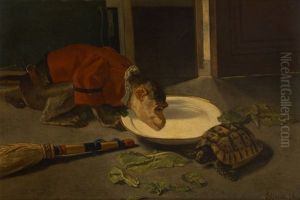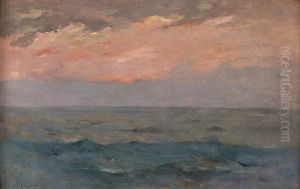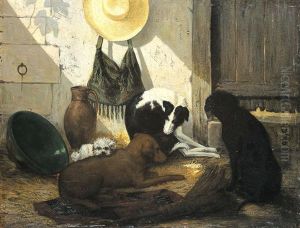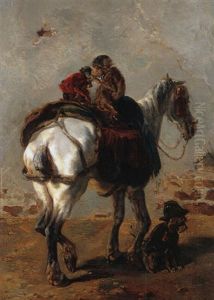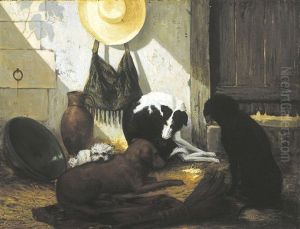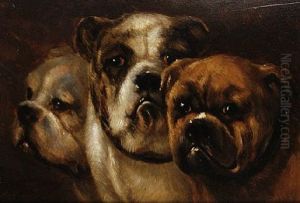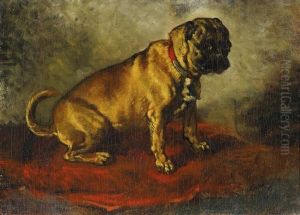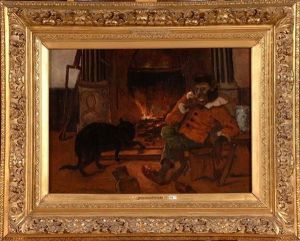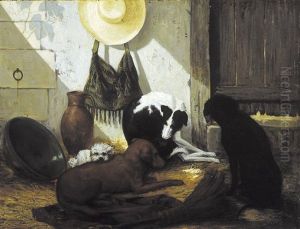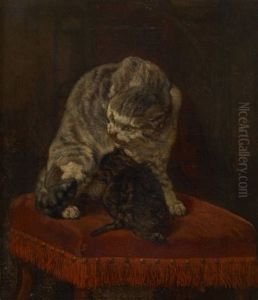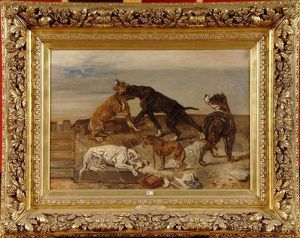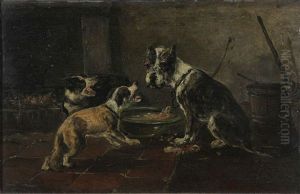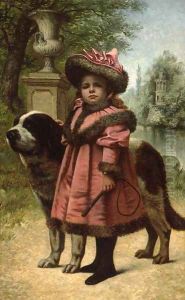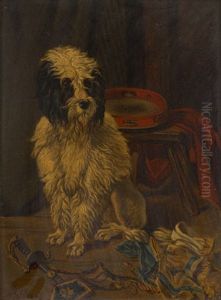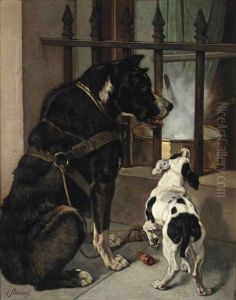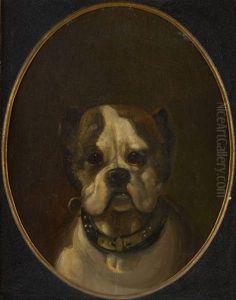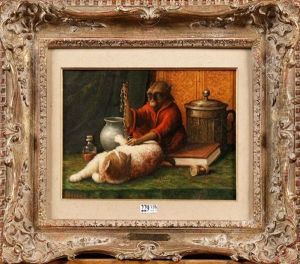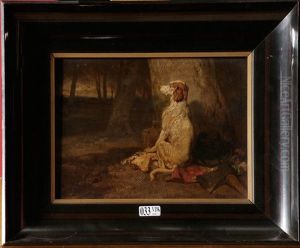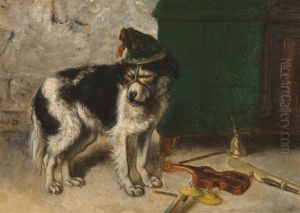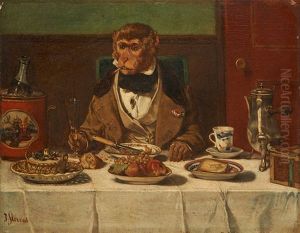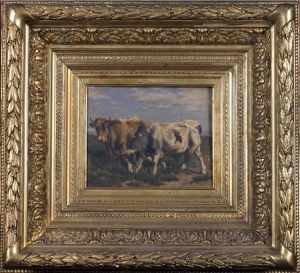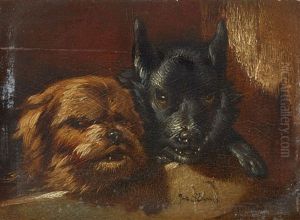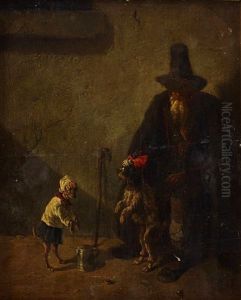Joseph Stevens Paintings
Joseph Stevens was a Belgian painter, known for his realistic depictions of animals, particularly dogs, and scenes of everyday life in the 19th century. Born on July 11, 1816, in Brussels, he was part of a creative family, with his brother Alfred Stevens becoming a prominent figure in Belgian art as well.
Joseph Stevens received his initial artistic training at the Académie Royale des Beaux-Arts in Brussels, where he honed his skills in painting and drawing. His early work was influenced by the Dutch and Flemish masters, evident in his attention to detail and the textured portrayal of animal fur. Stevens's dedication to realism was such that he often brought dogs into his studio to serve as live models, allowing him to capture their movements and expressions with greater accuracy.
Over time, Stevens's paintings gained recognition for their unique subject matter and execution. He became particularly noted for his ability to convey the personalities and idiosyncrasies of the dogs he painted, often anthropomorphizing them to create humorous or satirical scenes. His work reflects the urbanization of Brussels, showing animals not in bucolic, pastoral settings but in the streets and homes of the growing city.
Throughout his career, Joseph Stevens exhibited his work widely. He was appreciated by critics and the public alike, and his paintings were sought after by collectors. Despite the popularity of his animal scenes, Stevens was also an accomplished painter of human subjects, and his genre scenes depicting the daily life of the working class in Brussels were also well-received.
Joseph Stevens's contribution to Belgian art was significant in that he carved out a niche for himself with his focus on animals, offering an alternative perspective to the more traditional historical and mythological subjects of the time. His work provided an important social commentary on the changing landscape of the 19th-century city and its inhabitants, both human and animal.
Stevens continued to paint until his later years, and his work remained popular throughout his lifetime. He passed away on August 2, 1892, in Brussels. Today, his paintings can be found in various art museums across Belgium and beyond, where they continue to delight and intrigue viewers with their charm and detailed depiction of 19th-century life.
